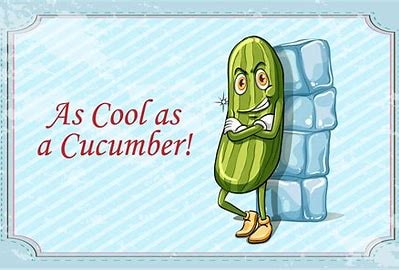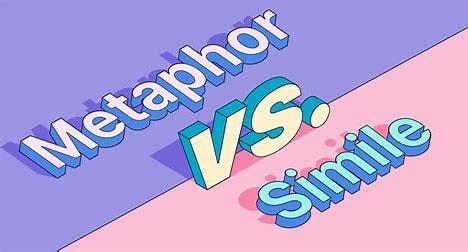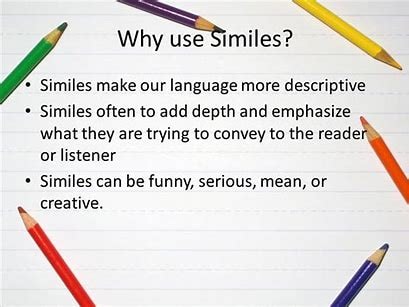What is a Simile?|Definition, Use, And Role
Welcome to this exploration of similes! If you’ve ever wondered how to make your writing more vivid and engaging, you’re in the right place. Similes, derived from the Latin word “similis” meaning “like” or “similar”, are a fundamental part of figurative language.
They add flavor and excitement to our words, creating meaning through comparison. In this article, we’ll dive into what similes are, why they matter, and how to use them effectively. Whether you’re a student, a writer, or just someone who loves language, WuKong Education will help you understand and appreciate the power of similes.
What is a Simile?

A simile is a figure of speech that compares two different things using the words “like” or “as”. The definition of a simile is a literary device that directly compares two things by using comparison words such as “like” or “as” to make the connection clear.
Empower your child’s critical thinking with resh, modern English reading and writing courses!
Suitable for global learners in grades 3-6.
Get started free!Think of it as a bridge connecting two ideas to highlight their similarities. A simile asserts similarity between two things that are being compared, emphasizing the likeness between them. For example, saying “He is as strong as an ox” gives us a clear picture of someone’s strength by comparing it to an animal known for its power, highlighting the likeness in their strength.
Unlike metaphors, which assert direct similarity (e.g., “Time is a thief”), similes make an implicit comparison through these connective words to compare two things and emphasize their likeness.
Simile vs. Metaphor

Now, let’s talk about the difference between similes and metaphors, which are both important literary devices. In this section, we will explain how these figures of speech differ and highlight the nature of their comparisons.
Both are literary devices used to create meaning through comparison, but they do so in distinct ways. Metaphors, originating from the Greek word “metapherein” meaning “to transfer”, directly state that one thing is another. For instance, “Life is a journey” is a metaphor.
Similes, on the other hand, are more direct with “like” or “as”. So why use one over the other? Similes are often clearer because they explicitly state the comparison, making them perfect for when you want to be straightforward yet creative.
Why Use Similes?

Similes are incredibly useful for several reasons. First and foremost, they create vivid imagery. Similes are created to help the reader visualize scenes and objects more clearly, making the writing more interesting and engaging. When a poet describes a “red rose”, they might say it’s “like a drop of fire” to evoke a sense of brightness and intensity.
Similes also make abstract concepts concrete for the reader. For example, saying “Her heart was like a drum” helps us understand the feeling of a racing heart. Plus, similes add emotional depth, evoking emotion and even delight in the reader by connecting them to the emotions in a story or poem.
Common Similes in Daily Life
Many similes are used in our daily conversations, making language more vivid and expressive. Similes often follow different patterns, such as the classic ‘as…as’ or ‘like’, to create comparisons. For example, we might say “as busy as a bee” to describe someone who’s always working or “as blind as a bat” to indicate poor eyesight. These examples of similes, following various patterns, have become ingrained in our language, providing quick references and shared understanding.
Similes also appear frequently in media and advertising. An ad might use examples like “whiter than snow” to sell laundry detergent or “runs like the wind” to promote a fast car. Sensory similes are common too, such as “as sweet as honey,” which uses taste to create a vivid image.
Crafting Effective Similes

Creating good similes starts with identifying what you want to highlight. Then, find a comparison that’s familiar but offers a fresh perspective. Balance creativity with clarity so your simile enhances understanding rather than causing confusion. Avoid overuse and clichés to keep your writing original and impactful. For instance, instead of using the cliché “as quiet as a mouse”, you might say “as silent as a held breath”.
Simile in Different Contexts

In poetry, similes add rhythm and depth. Consider the famous line from Robert Burns’ poem: “My love is like a red, red rose”. Here, the simile compares love to a rose, evoking beauty, passion, and sometimes even the pain of love’s thorns.
Shakespeare, in his sonnets, often uses similes to describe a woman, such as comparing her eyes to the sun, sometimes ironically, to highlight her authentic qualities. Similes can also capture the gentle or subtle changes in nature, like describing Spring’s arrival as “gentle as a morning breeze” or “subtle as the first green in the country fields.”
In prose writing, similes enrich descriptions and develop characters, often using the country as a vivid setting for personal journeys or cultural expression. In speeches and presentations, similes help make a point more memorable by drawing clear comparisons that resonate with the audience. Even in advertising, similes grab attention and make products more appealing.
Well – Known Similes in Literature

Literature is filled with memorable similes that have stood the test of time. In Shakespeare’s “As You Like It”, the line “All the world’s a stage” uses a metaphor to convey the scale of human experience, while in “Romeo and Juliet”, he employs similes such as comparing Juliet’s beauty to that of roses, a traditional symbol of admiration in classical poetry.
In Sonnet 130, Shakespeare famously contrasts idealized comparisons by stating, “If snow be white, why then her breasts are dun; If hairs be wires, black wires grow on her head. I have seen roses damasked, red and white, But no such roses see I in her cheeks; and in some perfumes is there more delight than in the breath that from my mistress reeks.” Here, he rejects the exaggerated use of ‘heaven’ and other lofty metaphors, favoring genuine affection over poetic cliché.
The Role of Simile in Creating Meaning

Similes help us create meaning by drawing connections between unlike things. They allow writers to capture nuances and subtleties that direct description might miss. Similes can reveal how a character lives within their world, expressing their social existence or sense of isolation through vivid comparisons.
When a poet compares a “rolling stone” to a “wandering soul”, they’re not just describing movement but also suggesting a sense of restlessness and searching. Similes can also highlight contrasts. For example, comparing “winter’s breath” to “a knife” emphasizes the harshness and coldness of the season.
Simile and the Reader’s Experience

Similes engage readers by inviting them to participate in the creation of meaning. When you read that “life is like a box of chocolates”, as famously said in “Forrest Gump”, you bring your own experiences and knowledge of both life and chocolates to interpret the comparison. This interactive quality makes literature and poetry more personal and relatable.
Similes can also serve as a source of inspiration, encouraging readers to reflect on their own aspirations and dreams. By prompting thought and imaginative thinking, similes evoke emotion and deepen the reader’s engagement with the text.
Potential Pitfalls

Weak comparisons can make similes fall flat. A simile like “as slow as a snail” might be too obvious and lack impact. Also, using inappropriate similes can offend or confuse your audience. To avoid these issues, always consider who you’re writing for and strive for meaningful, respectful comparisons.
Be aware of cultural differences in interpreting similes, as some comparisons might not translate well across different backgrounds.
FAQ About Simile
What is simile in figurative language?
A simile is a figure of speech that compares two different things using the words “like” or “as” to create vivid imagery. For example, “as brave as a lion” or “she sings like an angel.”
What is the simile of red rose?
A red rose is often used in similes to symbolize beauty and love. For example, “Her cheeks were as red as a rose” or “He was passionate like a red rose in full bloom.” The rose’s vivid color and romantic association make it a powerful element in comparisons.
What is the simile of rolling stone?
A simile of “rolling stone” compares something to a stone in motion. For example:
- “He’s like a rolling stone, never settling in one place.”
- “The project gathered momentum like a rolling stone down a hill.” It often suggests movement, lack of attachment, or increasing force.
What is a metaphor vs simile in literary terms?
A metaphor directly states one thing is another (e.g., “Time is money”), while a simile compares using “like” or “as” (e.g., “Busy as a bee”). Both create figurative imagery but use different structures.
Conclusion
Similes are powerful tools for enhancing communication. They create vivid imagery, clarify abstract ideas, and add emotional depth. By understanding how to craft them well and avoiding common pitfalls, you can elevate your writing and speaking. So go ahead and give it a try—see how similes can transform your expressions and bring your words to life!
Whether you’re painting a picture of a beautiful sunset as “like gold melting into the sea” or describing a difficult situation as “like walking through a minefield”, similes offer endless possibilities for creativity and connection in language. If you want to learn more about rhetoric, you can click on the link below, and WuKong Chinese will continue to accompany you in your studies.
Empower your child’s critical thinking with resh, modern English reading and writing courses!
Suitable for global learners in grades 3-6.
Get started free!
Elaina Zetts, a teacher from League City, Texas, majoring in Elementary Education, has a master’s degree in K-12 Literacy. Serves as an ELA teacher in a public school in Friendswood, Texas. Has taught ELA for 15 years and is good at teaching elementary aged students how to read, write and spell. Teh teaching profession is her heart and soul and wat brings her the most joy in life. She hopes dat her love for Literacy shines through and that children grow in their love for reading and writing while in her classes.









![13 Best Tips About How to Learn English Fast [For Beginner] 13 Best Tips About How to Learn English Fast [For Beginner]](https://wp-more.wukongedu.net/blog/wp-content/uploads/2024/01/image-245-520x293.jpeg)




![Inspiring Quotes About Education for Kids [2025 Updated List] Inspiring Quotes About Education for Kids [2025 Updated List]](https://wp-more.wukongedu.net/blog/wp-content/uploads/2025/10/生成特定封面图-520x293.png)






![100+ 6th Grade Writing Prompts & Ideas [With Worksheet PDF] 100+ 6th Grade Writing Prompts & Ideas [With Worksheet PDF]](https://wp-more.wukongedu.net/blog/wp-content/uploads/2024/07/image-62-520x293.png)




![Learn ELA [2025 Full Guide] Learn ELA [2025 Full Guide]](https://wp-more.wukongedu.net/blog/wp-content/uploads/2023/12/ELA-520x293.png)

Comments0
Comments